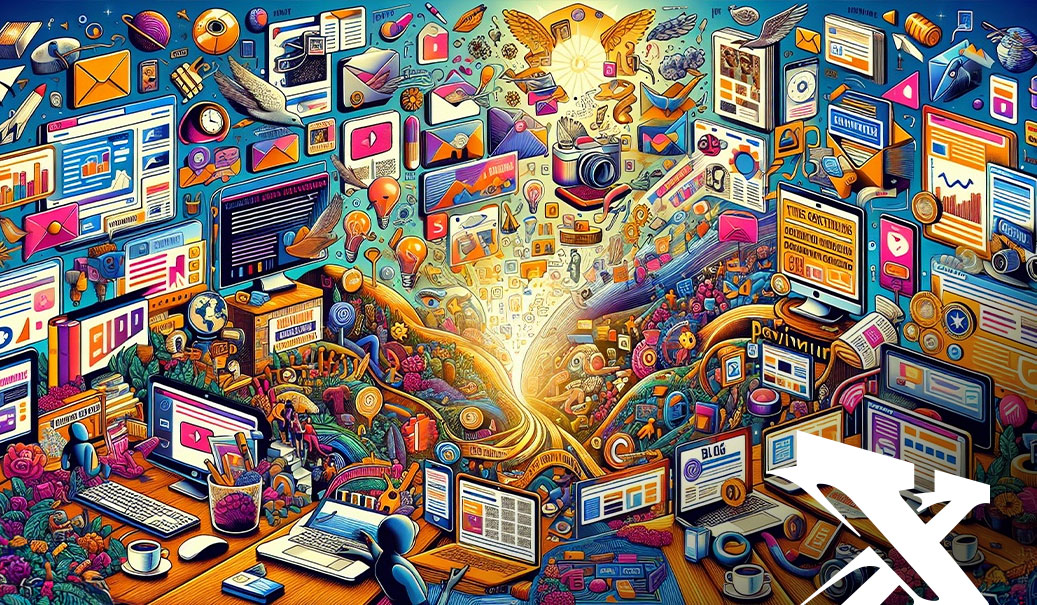
The 5 “W”s to win at content marketing
We’re living in the golden age of content marketing.
As of March 2024, the New York Times reported that 90% of all organizations use content marketing. In the B2B world, 73% incorporate content marketing into their overall strategy. And why not? Content marketing costs 62% less than traditional marketing channels, and – done right – generates leads 6x more likely to convert.
Seems like a no-brainer, right? And there lies the problem.
Cheap and fast are the enemies of good
If you’re doing content marketing just to do it, you’re probably doing it wrong. According to the Content Marketing Institute (CMI), only 29% of marketers surveyed said their organizations were “extremely or very successful with content marketing” as of last year. The same survey reported that only 40% have a documented content marketing strategy – a stat that certainly explains (at least in part) the lack of critical success. Strategy ensures your content is speaking to your audience’s interests, their needs, and how they find information. Otherwise, you’re just talking to yourself.
The 5 “W”s of content marketing
So if you happen to be in the 71% of marketers who could see better results from their content marketing, the question is: how do you get audiences to buy both your ideas and your products?
The best practice for creating content, as any journalist will tell you, is to consider the 5 “W”s: who, what, when, where, and why (not necessarily in that order).
Why: Because you’re building a relationship, not ticking a box
If you’re doing content marketing just because it’s expected, you’re missing a huge opportunity. Buyers are looking to build a relationship with your brand, to find evidence of your strategic thinking, to see that you know something they’re interested in learning. Traditional ad and media campaigns struggle to achieve that, probably because, as LinkedIn for Marketing points out, “brands are always trying to find their customers. The beauty of content is that it helps your customers find you.”
What: It’s a dialogue, not a monologue
When it comes to content, probably the most common error is in telling people what you want them to hear, rather than what they want to know. According to CMI, only 66% of B2B marketers “frequently prioritize their audience’s needs over their sales message when creating content.” By contrast, 88% of the most successful content marketers do. As marketing guru/publisher Jamie Turner put it, “the only way to win at content marketing is for the reader to say ‘this was written specifically for me.’”
Where: It should live where the audience looks, not chase after them
Social media still ranks highest among the sources that clients discover organically, but it’s not all created equal. For 2024, CMI reports that 84% of B2B marketers consider LinkedIn the organic social media platform that delivers the best value. Among content that your audience will seek out, content marketer Isoline says your website is still the best place to host: 63% of B2B buyers they surveyed will go directly there for information. Just be sure your content lives on the site – rather than in a PDF or linked out – if you want the full benefit of SEO.
When: Ideally, it hits at different stages of the buyer’s journey
CMI research shows that 61% of content marketers consider tailoring content to the buyer’s journey as their biggest challenge. That said, they offer insights to address it. Quick-hit media like infographics, videos and blog posts are valuable in the early stages of the buying process – effectively the getting-to-know-you phase – while robust content like webinars and white papers are best suited to the end of the journey, to help seal the deal.
Who: People do business with people, not AI
Don’t get us wrong; AI has its place. Research firm Ipsos says 40% of marketers who’ve adopted generative AI saw increased productivity in 2023, and 39% saw accelerated content creation. But letting your tech create your content has its risks, too, because automated, generic insights will not only fail to differentiate you, they could harm business. Mistakes, inaccuracies, copyright violations and misalignment with your brand voice are all concerns, according to Forbes, when there’s no human oversight. And bottom line, your own point of view will always have more credibility. As CX expert Jay Baer puts it, “tools are great, but content marketing success is about the wizard, not the wand.”
When it comes to content, the more, the mightier
Finally, once you’ve got the right content, at the right time and place, there’s still one important rule: one-offs don’t get it done. Given the time, thought and money you’ve invested in your content, it’s best to follow the “Rule of Seven.” One piece of well-researched content can easily multiply and be spread across various stages of the buyer’s journey to maximize its impact, e.g.:
Early: social media ads, blog posts
Middle: infographics, videos, e-books
Late: white papers, webinars
Bottom line, if you build it, they will come: LinkedIn for Marketing reports that 72% of B2B buyers “consume three or more pieces of content before making a purchase decision.” (And if three is the minimum, think what seven could get you.)
Want to learn how well your own content marketing stacks up? Take our Content Marketing Strategy quiz for your results and personal tips.
Let's Explore How the Right Chemistry Can Help You Reach Your Goals

Congrats, now you're a B&D VIP! We'll be in touch soon.

Sorry, there was an error.


